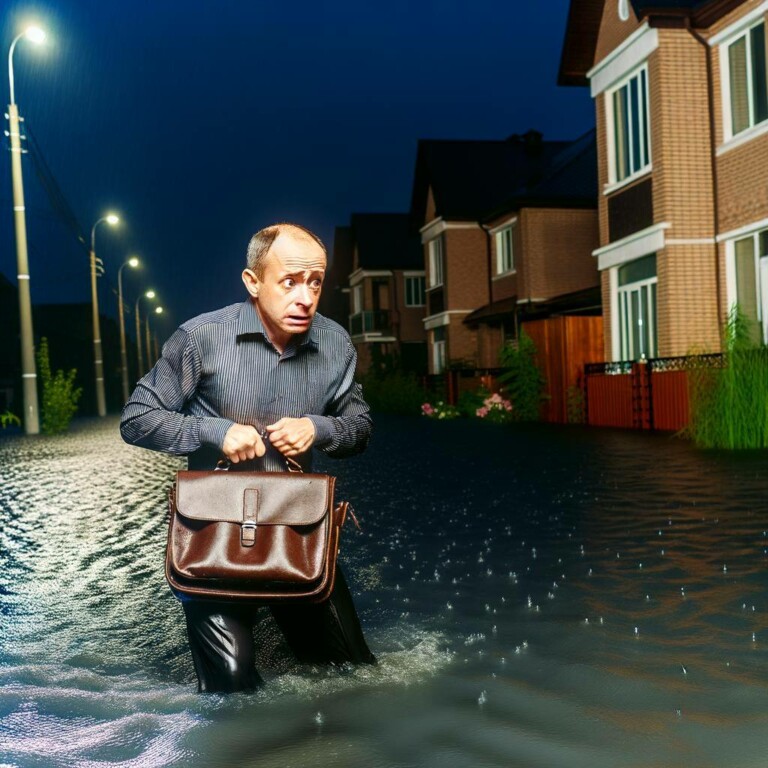Preparing for Hurricane Season in Savannah, Georgia: What You Need to Know
As hurricane season approaches, it’s crucial for residents of Savannah, Georgia, to be well-prepared. The city’s location along the coast makes it particularly vulnerable to hurricanes and tropical storms. This blog will guide you through what to expect during hurricane season, how to prepare, and why flood insurance is essential for protecting your home and property.
Understanding the Impact of Hurricanes in Savannah
Understanding the impact of hurricanes in Savannah requires a careful examination of the region’s vulnerabilities. The long history of hurricane activity in Chatham County has shaped the community’s resilience and preparedness strategies. Residents often see the aftermath of these storms and agree that collaboration is essential for recovery. Together, local authorities and citizens work to develop plans that mitigate damage and ensure safety during hurricane season.
Despite the challenges, the spirit of Savannah’s community has never wavered. The lessons learned from past hurricanes have led to much-needed improvements in infrastructure and emergency response systems.
Understanding the long-term effects on both the environment and the economy is crucial for future planning. As the region continues to face the realities of climate change, it is vital to remain vigilant and proactive in hurricane preparedness efforts.
What Hurricane Season Looks Like in Coastal Georgia
Hurricane Season Start and End Dates:
Hurricane season officially begins on June 1st and lasts until November 30th. However, the peak of the season typically occurs between August and October, when conditions are most favorable for storm development. During this time, Savannah and other coastal areas of Georgia are at an increased risk of experiencing hurricanes and tropical storms.
Major Storms to Expect This Year:
Each year, meteorologists predict the number of storms that might develop. While predictions can vary, it’s essential to stay informed about the latest forecasts. In a typical season, you can expect anywhere from 12 to 18 named storms, with several potentially becoming hurricanes. Knowing the forecast helps residents stay alert and prepared for the possibility of severe weather.
How Savannah’s Weather May Influence Storm Impact:
Local weather patterns play a significant role in the impact of hurricanes on Savannah. Warm sea surface temperatures in the Atlantic Ocean, coupled with prevailing winds, can strengthen storms as they approach the coast. Additionally, Savannah’s relatively flat terrain and proximity to the ocean can exacerbate the effects of storm surges, leading to more severe flooding and wind damage.
The Long-Term Impact of Hurricanes on Savannah
Flooding Risks and Water Damage:
Flooding is one of the most significant risks associated with hurricanes, especially in low-lying coastal areas like Savannah. Storm surge, which is the rise in seawater level due to the storm’s winds, can lead to catastrophic flooding. Heavy rainfall can also overwhelm drainage systems, causing flash floods. The combination of these factors can result in widespread water damage to homes, businesses, and infrastructure.
The Lasting Effects on Local Communities:
Hurricanes can have a lasting socio-economic impact on communities. In addition to the immediate damage to property and infrastructure, there’s often a prolonged recovery period during which residents may be displaced, businesses may struggle to reopen, and the local economy can suffer. The emotional and psychological toll on individuals and families is also significant, as they deal with the loss of homes, possessions, and, in some cases, loved ones.
Possibility of Tropical Storms and Their Impact:
Even if a storm doesn’t reach hurricane strength, tropical storms can still cause substantial damage. High winds, heavy rain, and the potential for tornadoes make tropical storms dangerous. In Savannah, tropical storms can lead to flooding, downed trees and power lines, and damage to homes and vehicles. It’s important not to underestimate the threat posed by these storms, even if they don’t carry the “hurricane” label.
How to Prepare for a Hurricane in Savannah
Steps to Prepare Your Home for a Storm:
Securing your home before a storm hits is one of the most important steps you can take to protect your property and loved ones. Begin by installing storm shutters or boarding up windows to protect against flying debris. Reinforce doors, especially garage doors, to withstand high winds. Trim trees and shrubs around your home to minimize the risk of branches breaking off and causing damage. Additionally, secure outdoor furniture and other loose items that could become projectiles in high winds.
Why You Should Always Have a Hurricane Supply Kit:
A well-stocked hurricane supply kit is essential. Your kit should include non-perishable food, water (at least one gallon per person per day for at least three days), medications, a first-aid kit, flashlights, batteries, and important documents such as insurance policies. It’s also a good idea to include comfort items like blankets, extra clothing, and games or books to keep children occupied. Preparing your kit well in advance ensures that you’re not scrambling for supplies when a storm is imminent.
Keeping Your Mind at Ease During Hurricane Season:
Hurricane season can be stressful, especially when a storm is approaching. To manage anxiety, stay informed but avoid constantly checking the news, which can increase stress levels. Establish a communication plan with family and friends so everyone knows how to stay in touch during and after the storm. Knowing your evacuation route and having your supplies ready can also provide peace of mind.
The Importance of Having an Evacuation Plan: Lessons from Hurricane Debbie
Having a solid evacuation plan is not just a recommendation—it’s a necessity, especially if you live in a coastal area like Savannah. My sister’s experience during Hurricane Debbie is a powerful reminder of why preparation is crucial. She lived on Tybee Island, one of the most beautiful but vulnerable spots along the Georgia coast.
When Hurricane Debbie was forecasted to make landfall, the situation quickly escalated. The winds picked up, the skies darkened, and suddenly, Tybee Island was underwater. My sister and her family had to act fast. They had a plan in place, so they knew exactly what to do. They packed their essential belongings, including their hurricane supply kit, important documents, and some personal items they couldn’t bear to lose. They loaded up the car and headed inland to stay with family.
The evacuation route was crowded with other residents trying to leave the island. But because my sister had planned ahead, they left early enough to avoid the worst of the traffic. It was still a tense and emotional journey, leaving their home behind and not knowing what they would return to.
Fortunately, they made it to safety well before the storm hit. However, the experience was a stark reminder that hurricanes are unpredictable and can turn dangerous quickly. When they returned home, they found that while their house had sustained some damage, it was not as bad as it could have been. The early evacuation had also given them peace of mind during the storm, knowing they were out of harm’s way.
This personal story illustrates the importance of having a detailed evacuation plan. Your plan should include:
- Knowing Your Evacuation Zone: Understand if you live in a mandatory evacuation zone and know your nearest evacuation routes. Maps and local resources are available to help you identify the best routes out of your area.
- Deciding Where to Go: Plan ahead where you will go during an evacuation. This could be a friend’s or relative’s house, a hotel, or a designated shelter. Make sure everyone in your household knows the destination and how to get there.
- Preparing Your Vehicle: Keep your vehicle in good working condition, and make sure it’s filled with gas. Also, pack an emergency car kit that includes items like a spare tire, jumper cables, and emergency flares.
- Leaving Early: Evacuate early to avoid being caught in traffic or dangerous conditions. The sooner you leave, the safer your journey will be.
Remember, during a hurricane, time is of the essence. A well-thought-out evacuation plan can mean the difference between safety and disaster.
What to Do Before, During, and After a Hurricane
Check Your Insurance Policy and Coverage:
Before a hurricane hits, it’s essential to review your insurance policy. Ensure that your coverage is adequate for the value of your home and possessions. Standard homeowners insurance typically does not cover flood damage, so it’s vital to have a separate flood insurance policy if you live in a high-risk area like Savannah.
Make Sure to Have an Evacuation Plan in Place:
As discussed earlier, having an evacuation plan is critical. Know your evacuation zone and route, and have a list of emergency contacts handy. If you have pets, ensure that your evacuation plan includes provisions for their safety as well.
How to Stay Informed About the Weather:
Staying informed during hurricane season is crucial. Use reliable sources like the National Weather Service (NWS), the National Oceanic and Atmospheric Administration (NOAA), and local news stations for updates. Sign up for emergency alerts, and follow trusted weather apps to get real-time information on storm progress, warnings, and evacuation orders.
Flood Insurance in Savannah: Why It’s Essential
Understanding Flood Risks in Coastal Areas
Why Savannah’s Geography Increases Flood Risk:
Savannah’s coastal location and low-lying topography make it particularly susceptible to flooding. The city’s proximity to the Atlantic Ocean means that it is vulnerable to storm surges, which can cause water levels to rise rapidly and inundate large areas. Additionally, the region’s rivers and marshes can overflow during heavy rainfall, exacerbating flood conditions.
The Role of Flood Maps in Identifying Risk Zones:
FEMA flood maps are a valuable tool for assessing flood risk. These maps categorize areas based on their likelihood of flooding, which is determined by factors such as elevation, proximity to water bodies, and historical flood data. Homeowners in Savannah should review these maps to understand their property’s risk level and ensure they have adequate flood insurance coverage.
How to Get the Best Flood Insurance Coverage
Understanding the National Flood Insurance Program (NFIP):
The National Flood Insurance Program (NFIP) is a federal program managed by FEMA that provides flood insurance to property owners, renters, and businesses. It’s the primary source of flood insurance for most homeowners in the U.S., especially in high-risk areas. NFIP policies offer coverage for building property (up to $250,000) and personal property (up to $100,000).
This includes structural damage, electrical and plumbing systems, and appliances. However, NFIP has limitations, such as coverage caps and exclusions for certain types of damage, like basement contents. Additionally, there is typically a 30-day waiting period.
Conclusion
In conclusion, preparing for hurricanes and understanding flood risks, especially in areas like Flood Zone AE, is crucial for homeowners. By creating evacuation plans, securing insurance coverage, and staying informed, individuals can safeguard their homes and loved ones from the devastating effects of natural disasters.
Whether opting for the National Flood Insurance Program (NFIP) or exploring private insurance options, having the right coverage tailored to specific needs is essential.
Remember, being proactive, informed, and prepared can make all the difference in mitigating the impact of floods and ensuring financial security. Stay safe, stay informed, and take the necessary steps to protect what matters most.

Information contained on this page is provided by an independent third-party content provider. This website make no warranties or representations in connection therewith. If you are affiliated with this page and would like it removed please contact editor @producerpress.com


.png?width=1280&height=720&name=NEW%20Thumbnail%20(11).png)









